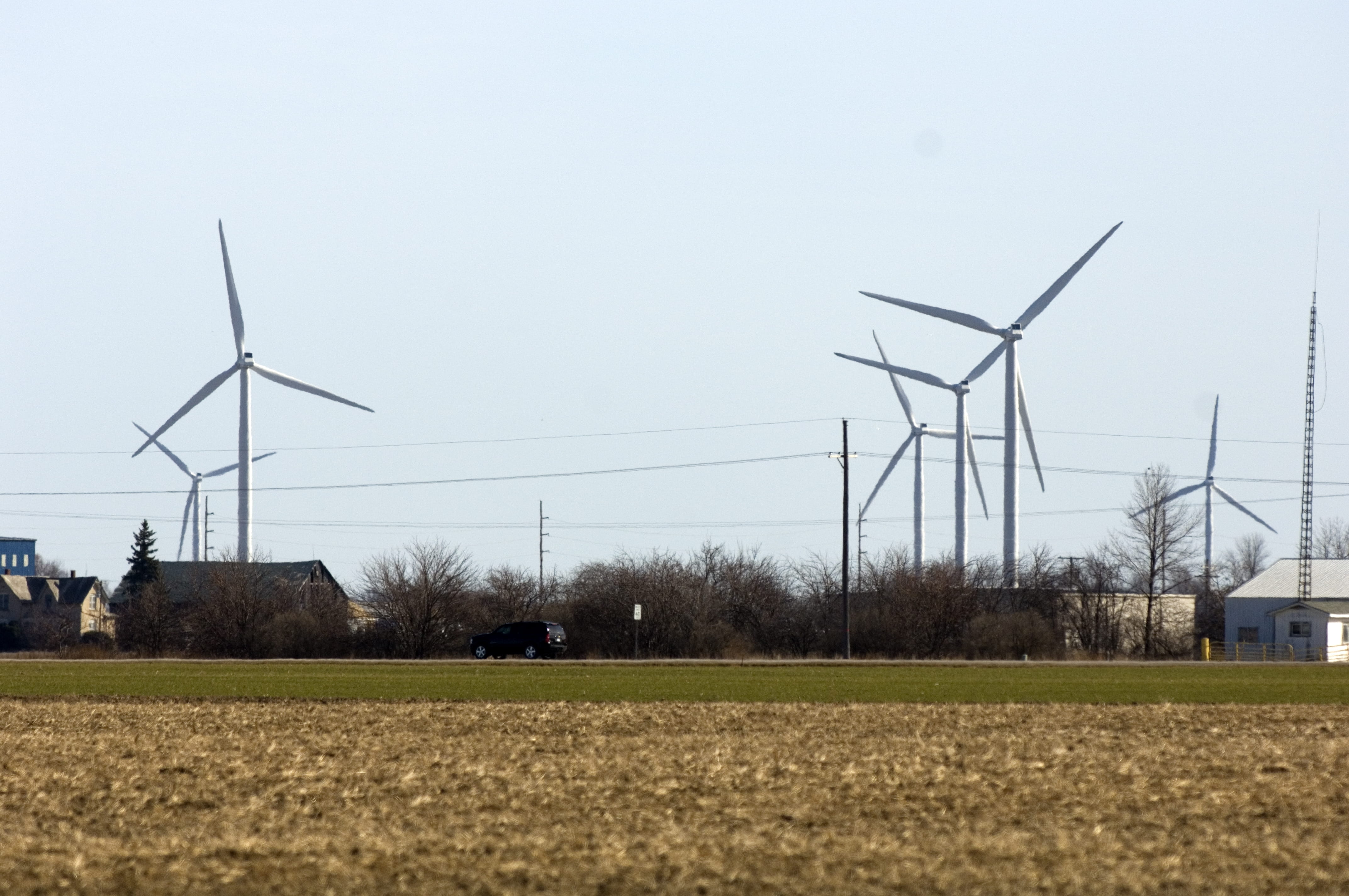The web Browser you are currently using is unsupported, and some features of this site may not work as intended. Please update to a modern browser such as Chrome, Firefox or Edge to experience all features Michigan.gov has to offer.
Lakes’ health depends on decarbonization
September 06, 2023
Today’s MI Environment story by Cory Connolly, Climate and Energy Advisor in EGLE’s Office of Climate and Energy, is from the State of the Great Lakes report.
Michigan and the Great Lakes already feel the effects of changing climate. Warmer waters feed bacteria and toxic algal blooms. Disrupted ecosystems displace native species and make invaders feel at home. Extreme rain events cause sewer overflows and generate sediment-filled runoff. People are moving full-time into formerly seasonal lakefront homes and neighborhoods, overloading septic systems that then add nutrients to inland lakes and increase aquatic plant growth.

Turbines harness the wind near Pigeon as part of Michigan's clean energy transformation. Photo courtesy of Michigan DNR.
The MI Healthy Climate Plan aims to accelerate Michigan’s transition to a carbon-neutral economy, capturing new economic opportunities and protecting our natural lands and waters.
Gov. Gretchen Whitmer called for the Plan in 2020, setting a goal of economywide carbon neutrality by 2050 to fuel a clean-energy economy and avert the worst impacts of climate change. After a process gathering input from hundreds of Michiganders, the Office of Climate and Energy (OCE) in the Michigan Department of Environment, Great Lakes, and Energy (EGLE) presented the Plan in April 2022, calling for ambitious action, including:
- A 60% renewable energy goal and retirement of coal-burning power plants.
- Infrastructure to support two million electric vehicles on the road by 2030 – a commitment that will also drive investments in infrastructure to clean maritime transportation at Michigan’s ports and harbors.
- A 17% emissions reduction from Michigan’s buildings by 2030, with a strong focus on home repairs such as investments in water infrastructure.
- Protecting 30% of Michigan’s land and water by 2030.
Recognizing that the fossil-fuel economy disproportionately harms indigenous communities that rely on the Great Lakes fishery to feed their families and earn a living, the Plan also calls for strategies and actions that respect and align with Tribal Nations’ heritage and treaty rights.
Michigan’s investments in a prosperous clean-energy future for the lakes began even before the Plan’s unveiling. In fall 2021, for instance, EGLE’s Office of the Great Lakes awarded a $100,000 grant to Michigan Technological University’s Great Lakes Research Center (GLRC) to advance the region as a maritime industry hub while reducing environmental impact.
The economic ecosystem surrounding the Great Lakes also offers other opportunities to mitigate greenhouse gas emissions in line with the Plan, such as outfitting Michigan’s harbors and ports with charging infrastructure for electric watercraft (see page 17), along with research and commercialization of new potential maritime fuels such as hydrogen. And ports and waterways enable Michigan’s manufacturing might to reach and transform the global economy. For example, the Port of Monroe sends wind turbine towers across the globe via companies like Monroe-based Ventower Industries. Implementing the Plan will reduce emissions from Michigan’s ports and harbors and maritime vessels and leverage those same cleaner assets to position Michigan in a future carbon neutral economy.
As Michigan’s waters face the impacts of climate change today, the State of Michigan is mobilizing around the MI Healthy Climate Plan to drive decarbonization across all of Michigan’s economy through clean energy, innovation in industry, and new mobility solutions. EGLE’s advisory Council on Climate Solutions will continue to guide the implementation, meeting on a quarterly basis.
Great Lakes’ changing vital signs
- Average regional air temperatures in 2021 were 1-3 degrees Celsius over long-term averages.
- 2021 water temperatures were up an average of 1.3 degrees Celsius.
- 2021 water levels were up 0.27 meters, but below record highs observed in 2019 and 2020.
- Winter ice covered 45.8% of the lakes in 2021, down from the long-term average of 53.3%.
- Precipitation is 14.25 mm below average across the Great Lakes basin.
- Evaporation for all lakes is above average at 117.15 mm.
- A 2021 Lake Erie algal bloom was more severe (6.0 on a severity index) than the mild bloom predicted (2.0-4.5). Anything over 5.0 is considered potentially harmful.
- To reduce the possibility of invasive species establishing themselves within the Great Lakes ecosystem, researchers have identified 144 species to watch.